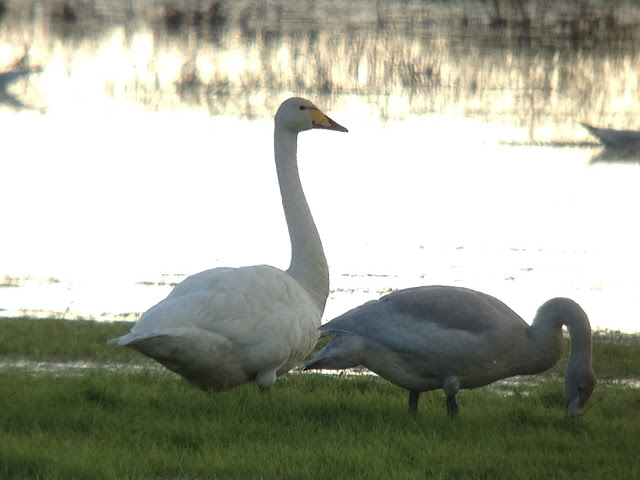Part 1 - the vision for wildlife and habitats
Our vision is of a large complex of restored wetlands and other habitats, connected to each other by ecological corridors. The scale of any one unit may vary from small ponds of just a few hectares to very large wild and difficult to access areas of many hundreds of hectares. In all the wetland complex at the core of the park will extend to more than 3000ha and with its associated habitats, ecological corridors and access ways the park as a concept will be of landscape scale, extending its influence across county borders between Longford and Roscommon and linking existing wetland sites like Lough Rea to surrounding hinterland wetlands habitats as well as connecting up local communities with accessible routes for sustainable transport like walking and cycling.
 |
| A cut-away bog undergoing rehabilitation to wetland habitats (image copyright: Alan Lauder) |
The wetlands themselves will require significant restoration. The opportunity presented by the gradual reduction in commercial peat harvest will enable the sites to be rehabilitated to wetlands, possibly even back towards an ecology that mirrors the very start of bog formation akin to that of many thousands of years before when lakes and depressions filled with water and wetland plants colonised.Some of the cut-away bogs are already entering restoration/rehabilitation and others will require this work in time
With the restoration of these cutaways (some of which extend to a thousand hectares or more), wetland birds, animals and plants will return. Extensive fens dominated by reedbeds will see Bitterns return to breed again in Ireland, their booming calls in the early morning belying their often hidden presence. The small Irish populations of rare species like Bearded Tits and Spotted Crakes with their own addition to the soundscape of the wetland landscape will re-colonise and grow the slender toehold these species have within Ireland. Marsh Harrier may re-colonise and Osprey and Common Crane may require help through re-introduction but with habitats in good condition they are likely to thrive.
 |
| Bearded Tit - a rare breeder in Ireland could return to extensive wetlands in the midlands (image copyright: Alan Lauder) |
Other wetland animals like Otter will thrive alongside rich fish, invertebrate and botanical communities.
Whooper Swans from Iceland and many wintering ducks like Wigeon, Teal and Shoveler from Iceland and Siberia that already winter on Lough will be able to build their numbers creating an impressive wildlife spectacle in winter to compliment the breeding birds of summer.
 |
| Whooper Swans from Iceland graze an Irish wetland in winter (image copyright: Alan Lauder) |
These new wetlands will have the capacity to hold more water than the former cutaway bogs and the agricultural land surrounding them, creating the potential to assist with flood storage. The wetlands, with high water in winter, will add to the capacity of the area to support wintering waterbirds.
 |
| Reedbeds will support a diverse range of breeding birds and other wildlife, some rare (image copyright: Alan Lauder) |
The Wetland Wilderness Park encompass these areas to form a key wetland wildlife hub in the middle of Ireland and an example of best practice in habitat management for wildlife. Alongside that the attraction of the spectacle of large or rare wildlife communities will benefit people and the vision for this will be examined in part 2...

No comments:
Post a Comment